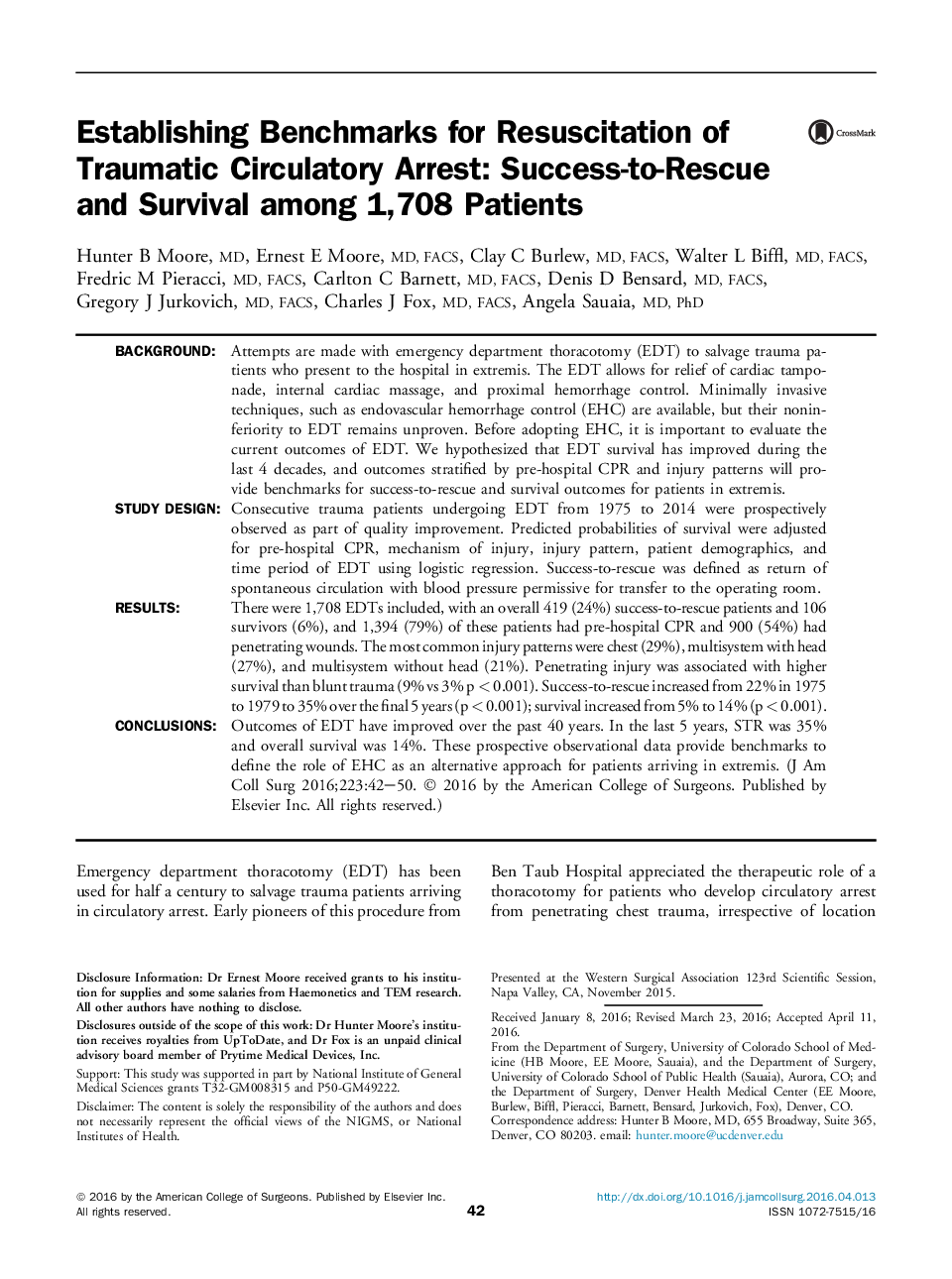| کد مقاله | کد نشریه | سال انتشار | مقاله انگلیسی | نسخه تمام متن |
|---|---|---|---|---|
| 4290515 | 1612204 | 2016 | 9 صفحه PDF | دانلود رایگان |
BackgroundAttempts are made with emergency department thoracotomy (EDT) to salvage trauma patients who present to the hospital in extremis. The EDT allows for relief of cardiac tamponade, internal cardiac massage, and proximal hemorrhage control. Minimally invasive techniques, such as endovascular hemorrhage control (EHC) are available, but their noninferiority to EDT remains unproven. Before adopting EHC, it is important to evaluate the current outcomes of EDT. We hypothesized that EDT survival has improved during the last 4 decades, and outcomes stratified by pre-hospital CPR and injury patterns will provide benchmarks for success-to-rescue and survival outcomes for patients in extremis.Study DesignConsecutive trauma patients undergoing EDT from 1975 to 2014 were prospectively observed as part of quality improvement. Predicted probabilities of survival were adjusted for pre-hospital CPR, mechanism of injury, injury pattern, patient demographics, and time period of EDT using logistic regression. Success-to-rescue was defined as return of spontaneous circulation with blood pressure permissive for transfer to the operating room.ResultsThere were 1,708 EDTs included, with an overall 419 (24%) success-to-rescue patients and 106 survivors (6%), and 1,394 (79%) of these patients had pre-hospital CPR and 900 (54%) had penetrating wounds. The most common injury patterns were chest (29%), multisystem with head (27%), and multisystem without head (21%). Penetrating injury was associated with higher survival than blunt trauma (9% vs 3% p < 0.001). Success-to-rescue increased from 22% in 1975 to 1979 to 35% over the final 5 years (p < 0.001); survival increased from 5% to 14% (p < 0.001).ConclusionsOutcomes of EDT have improved over the past 40 years. In the last 5 years, STR was 35% and overall survival was 14%. These prospective observational data provide benchmarks to define the role of EHC as an alternative approach for patients arriving in extremis.
Journal: Journal of the American College of Surgeons - Volume 223, Issue 1, July 2016, Pages 42–50
